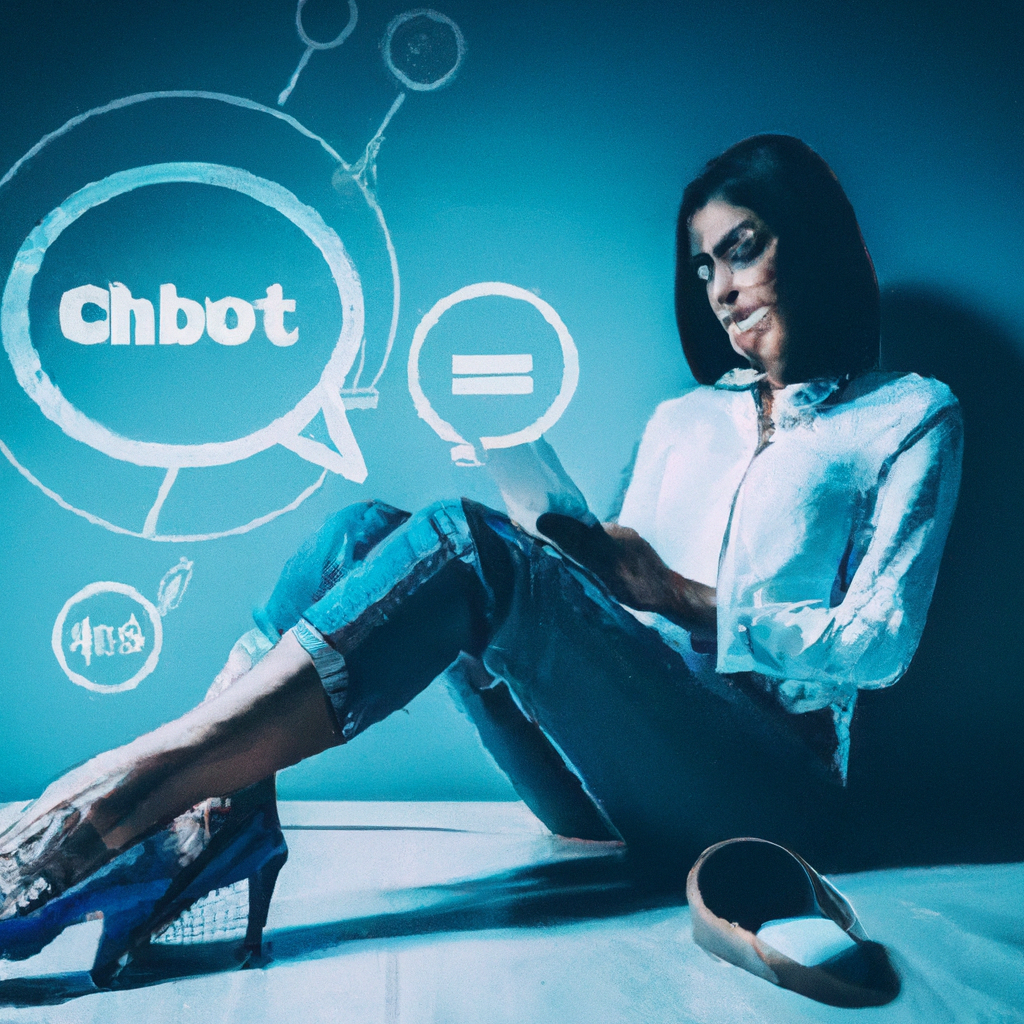Are you curious about how AI chatbot builders are revolutionizing the development of multilingual chatbots? Look no further! In this article, we will explore the incredible ways in which these chatbot builders are paving the way for seamless communication in multiple languages. From advanced language processing capabilities to easy customization features, AI chatbot builders are empowering businesses to effortlessly connect with their global audience. So grab a cup of coffee, sit back, and get ready to discover the fascinating world of multilingual chatbot development!

Types of AI chatbot builders
Conversational AI platform
A conversational AI platform is a comprehensive solution for building chatbots that can understand and respond to user inputs in multiple languages. These platforms typically provide a range of tools and functionalities to create and deploy chatbots with advanced natural language processing capabilities. Conversational AI platforms often incorporate machine learning algorithms to enhance the chatbot’s language understanding and response generation abilities.
Bot development frameworks
Bot development frameworks are software frameworks that provide the necessary tools, libraries, and APIs for building chatbots. These frameworks offer developers the flexibility to create custom chatbot solutions tailored to their specific needs, including multilingual chatbot development. Bot development frameworks allow developers to leverage AI technologies, such as natural language processing and machine learning, to enhance the language capabilities of their chatbots.
Chatbot building platforms
Chatbot building platforms are user-friendly tools that enable non-technical users to easily create chatbots without any coding knowledge. These platforms often have intuitive interfaces and drag-and-drop functionalities that allow users to design and deploy chatbots quickly. AI chatbot building platforms typically incorporate language processing capabilities, which make them suitable for developing multilingual chatbots without requiring extensive technical expertise.
Benefits of using AI chatbot builders for multilingual chatbot development
Efficiency in language processing
AI chatbot builders are equipped with advanced natural language processing (NLP) technologies that enable chatbots to efficiently understand and process user inputs in different languages. These NLP capabilities enable chatbots to accurately interpret and respond to user queries regardless of the language used, ensuring a smooth and seamless user experience.
Translation capabilities
AI chatbot builders often have built-in translation capabilities, allowing chatbots to quickly and accurately translate text from one language to another. This feature is particularly beneficial for multilingual chatbot development, as it enables chatbots to communicate with users in their preferred language, regardless of the language in which the chatbot is initially programmed.
Seamless integration with language APIs
AI chatbot builders typically offer seamless integration with language APIs, which provide additional language-related functionalities. These APIs can be used to detect the language of user inputs, identify specific words or phrases, perform sentiment analysis, and more. By integrating these language APIs into their chatbots, developers can enhance the language understanding and response generation capabilities of their chatbots.
Improved natural language understanding
AI chatbot builders utilize machine learning algorithms and NLP models to improve the natural language understanding of chatbots. These models are trained on large volumes of multilingual data, enabling chatbots to better comprehend user inputs and generate appropriate responses. By leveraging AI chatbot builders, developers can create chatbots that understand and interact with users in a more human-like manner, enhancing the overall user experience.
Language support offered by AI chatbot builders
Pre-built language models
Many AI chatbot builders come with pre-built language models that support a wide range of languages. These language models are trained on vast amounts of data and can accurately understand and process user inputs in their respective languages. By utilizing pre-built language models, developers can save time and effort in building language understanding capabilities from scratch and focus on other aspects of chatbot development.
Custom language model creation
In addition to pre-built language models, AI chatbot builders often allow developers to create custom language models. This feature is particularly useful for developing chatbots that need to cater to specific industry-specific terminologies or user jargon. By training custom language models, developers can improve the chatbot’s understanding and response generation capabilities in specialized domains or niche markets.
Language detection and identification
AI chatbot builders typically offer language detection and identification functionalities. This allows chatbots to automatically determine the language of user inputs, eliminating the need for users to specify the language themselves. By accurately detecting the language, chatbots can ensure that they respond appropriately and provide the best possible user experience.
Steps involved in developing multilingual chatbots using AI chatbot builders
Language requirement analysis
The first step in developing multilingual chatbots using AI chatbot builders is to analyze the language requirements of the target users. This involves identifying the languages in which the chatbot needs to support communication and understanding the specific language nuances and cultural factors that may impact the chatbot’s development.
Gathering multilingual training data
To train language models for multilingual chatbots, developers need to gather multilingual training data. This data should consist of a diverse range of user inputs in different languages to ensure the language models can accurately understand and respond to various queries. Gathering high-quality and representative training data is crucial for developing robust multilingual chatbots.
Training the language model
Next, developers need to train the language model using the gathered multilingual training data. AI chatbot builders typically provide tools and functionalities to facilitate the training process. During training, the language model learns the patterns and structures of different languages, allowing it to accurately interpret and generate responses in multiple languages.
Integration of language APIs
After training the language model, developers can integrate language APIs into the chatbot. These APIs provide additional language-related functionalities, such as language detection, sentiment analysis, and entity recognition. By integrating language APIs, developers can enhance the language capabilities of the chatbot and provide a more comprehensive and accurate user experience.
Testing and fine-tuning
Once the chatbot is developed and integrated with the language model and APIs, it is essential to thoroughly test and fine-tune its language understanding and response generation capabilities. Testing involves simulating user interactions in different languages and evaluating the chatbot’s performance. Fine-tuning the chatbot based on the test results helps improve its accuracy and effectiveness in understanding and responding to user inputs.

Factors to consider when choosing an AI chatbot builder for multilingual chatbot development
Language support
When selecting an AI chatbot builder for multilingual chatbot development, it is crucial to consider the language support offered by the platform. Ensure that the builder supports the required languages and has robust language understanding capabilities for accurate communication in different languages.
Translation capabilities
The translation capabilities of the AI chatbot builder are crucial for developing multilingual chatbots. Look for builders that offer accurate and efficient translation functionalities to ensure seamless communication in different languages.
Ease of integration
Consider the ease of integrating the AI chatbot builder with other systems and language APIs. The builder should have comprehensive documentation and support for seamless integration, allowing developers to leverage additional language-related functionalities.
Customization options
Choose an AI chatbot builder that provides customization options to tailor the chatbot to specific language nuances, industry terminology, and user preferences. Customization options should include the ability to train custom language models and define language-specific rules and responses.
Accuracy and performance
Ensure that the AI chatbot builder has a track record of delivering accurate and high-performing multilingual chatbots. Look for platforms with robust AI technologies and language models that have been tested and proven to provide accurate understanding and response generation capabilities in multiple languages.
Best practices for building multilingual chatbots using AI chatbot builders
Conduct thorough language analysis
Before starting to develop a multilingual chatbot, it is essential to conduct a thorough language analysis. This involves understanding the specific language requirements, cultural factors, and language variations that may impact the chatbot’s development and performance in different languages.
Utilize language-specific training data
When gathering training data for multilingual chatbots, it is crucial to include language-specific data to ensure accurate language understanding and response generation. Incorporating diverse and representative language-specific training data helps the chatbot learn the nuances of different languages and improves its language capabilities.
Combine learned and rule-based approaches
To enhance the language understanding and response generation capabilities of multilingual chatbots, it is beneficial to combine both learned and rule-based approaches. Learned approaches leverage machine learning algorithms and language models, while rule-based approaches rely on predefined rules and patterns to handle specific language scenarios. Combining these approaches can improve the chatbot’s accuracy and effectiveness in understanding and responding to user inputs.
Leverage machine translation techniques
Machine translation techniques can be leveraged to enhance the translation capabilities of multilingual chatbots. AI chatbot builders often incorporate machine translation technologies that can quickly and accurately translate text from one language to another. By utilizing machine translation, chatbots can communicate with users in their preferred language, even if the chatbot is initially programmed in a different language.
Regularly monitor and update language models
Language models used in multilingual chatbots should be regularly monitored and updated to ensure optimal performance. As language usage and patterns evolve, it is essential to continuously train and refine the language models to keep up with the changes. Regular monitoring and updating of language models help maintain accuracy and improve the chatbot’s language understanding capabilities over time.

Challenges in developing multilingual chatbots and how AI chatbot builders help overcome them
Language complexity and variations
Developing multilingual chatbots can be challenging due to the complexity and variations of different languages. AI chatbot builders help overcome this challenge by providing advanced language understanding and processing capabilities, including machine learning algorithms and pre-trained language models that enable chatbots to accurately interpret and respond to user inputs across various languages.
Training data availability and quality
Obtaining high-quality and representative multilingual training data can be a challenge when developing multilingual chatbots. AI chatbot builders often address this challenge by offering pre-built language models trained on vast amounts of multilingual data. These pre-built language models can be used as a starting point and can be further fine-tuned using domain-specific or language-specific training data to improve their accuracy and effectiveness.
Handling multiple languages simultaneously
Developing chatbots that can handle multiple languages simultaneously requires robust language understanding and processing capabilities. AI chatbot builders provide the necessary tools and technologies to handle multiple languages, allowing developers to create chatbots that can interpret and respond to user inputs in different languages seamlessly.
Scaling across languages
Scaling multilingual chatbots to support a growing number of languages can be challenging. AI chatbot builders help overcome this challenge by providing flexible and scalable platforms that can accommodate the addition of new languages. These builders often offer customizable language models and APIs that can be easily integrated and expanded to support new languages as needed.
Continual language model improvement
Languages are constantly evolving, and new words, phrases, and language patterns emerge over time. Continually improving the language models used in multilingual chatbots is crucial to keep up with these changes. AI chatbot builders often provide tools and functionalities for monitoring and updating language models, allowing developers to continuously improve the chatbot’s language understanding capabilities.
Case studies on multilingual chatbot development using AI chatbot builders
Company A: Building a multilingual customer support chatbot
Company A used an AI chatbot builder with robust language processing capabilities to develop a multilingual customer support chatbot. The chatbot was trained on language-specific data and integrated with language APIs for language detection and sentiment analysis. The chatbot successfully supported customer inquiries in multiple languages, improving customer satisfaction and reducing support ticket resolution time.
Company B: Creating a language-specific virtual assistant
Company B utilized an AI chatbot builder that allowed for the creation of custom language models to develop a language-specific virtual assistant. By training the language model on industry-specific terminology, the chatbot effectively understood and responded to user queries in the target language. The virtual assistant enhanced productivity and provided a personalized user experience.
Company C: Developing a global e-commerce chatbot
Company C utilized an AI chatbot builder with extensive language support and translation capabilities to develop a global e-commerce chatbot. The chatbot seamlessly communicated with customers in their preferred languages, providing product recommendations, answering user queries, and assisting with the purchasing process. The multilingual chatbot significantly improved customer engagement and conversion rates.

Future trends in AI chatbot builders for multilingual chatbot development
Advancements in language understanding technologies
AI chatbot builders will continue to advance in language understanding technologies, incorporating more sophisticated natural language processing techniques and complex language models. These advancements will enhance the accuracy and effectiveness of multilingual chatbots, allowing for more human-like and context-aware conversations.
Enhanced translation capabilities
The translation capabilities of AI chatbot builders will continue to improve, enabling chatbots to deliver more accurate and nuanced translations across different languages. Future developments may include real-time translation functionalities and support for lesser-known languages, expanding the reach and accessibility of multilingual chatbots.
Domain-specific language models
AI chatbot builders may offer domain-specific language models tailored to specific industries or use cases. These models will enable developers to create chatbots that understand and respond to industry-specific terminology and jargon, improving the chatbot’s language capabilities in specialized domains.
Seamless integration with language understanding systems
AI chatbot builders will likely provide seamless integration with other language understanding systems, such as voice recognition and sentiment analysis technologies. This integration will enable chatbots to understand and respond to different language inputs and user emotions, creating a more personalized and empathetic user experience.
Conclusion
AI chatbot builders play a crucial role in supporting the development of multilingual chatbots. Their advanced language processing capabilities, translation functionalities, and integration with language APIs enable developers to create chatbots that can effectively communicate and interact with users in multiple languages. By following best practices and leveraging the benefits of AI chatbot builders, developers can overcome challenges in multilingual chatbot development and create chatbots that provide a seamless and engaging user experience across different languages. The future of AI chatbot builders holds even more exciting possibilities with advancements in language understanding technologies and enhanced translation capabilities, making multilingual chatbots an indispensable tool for global communication and customer support.

